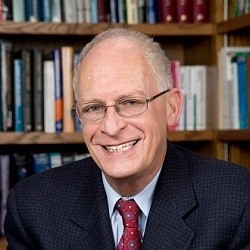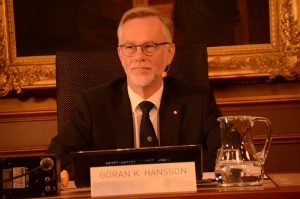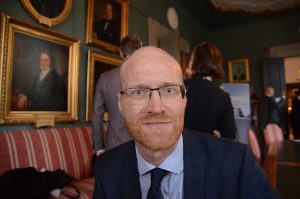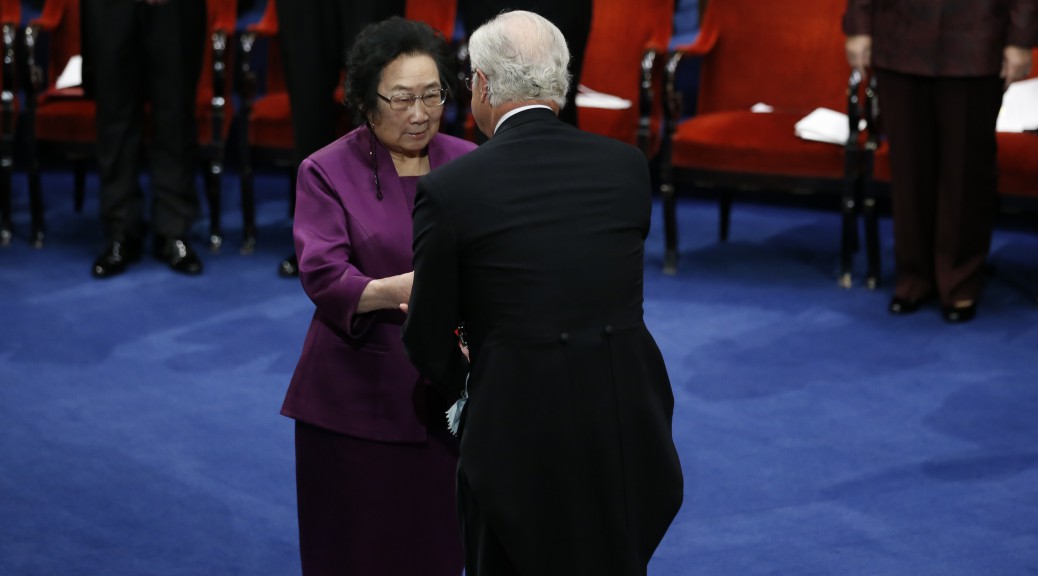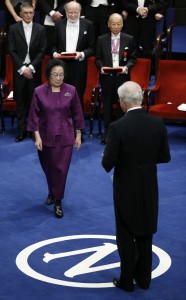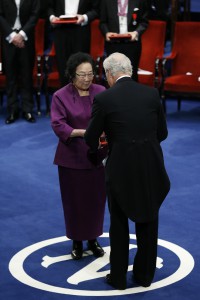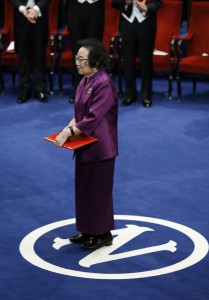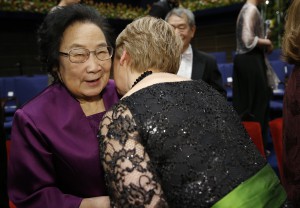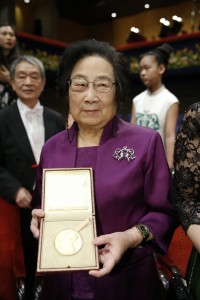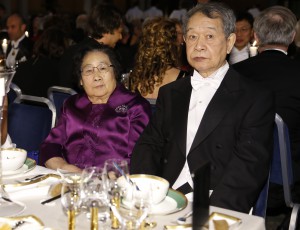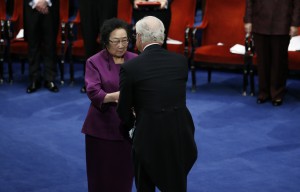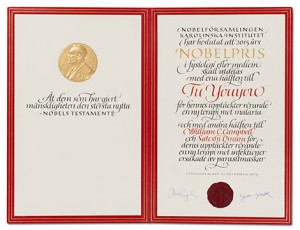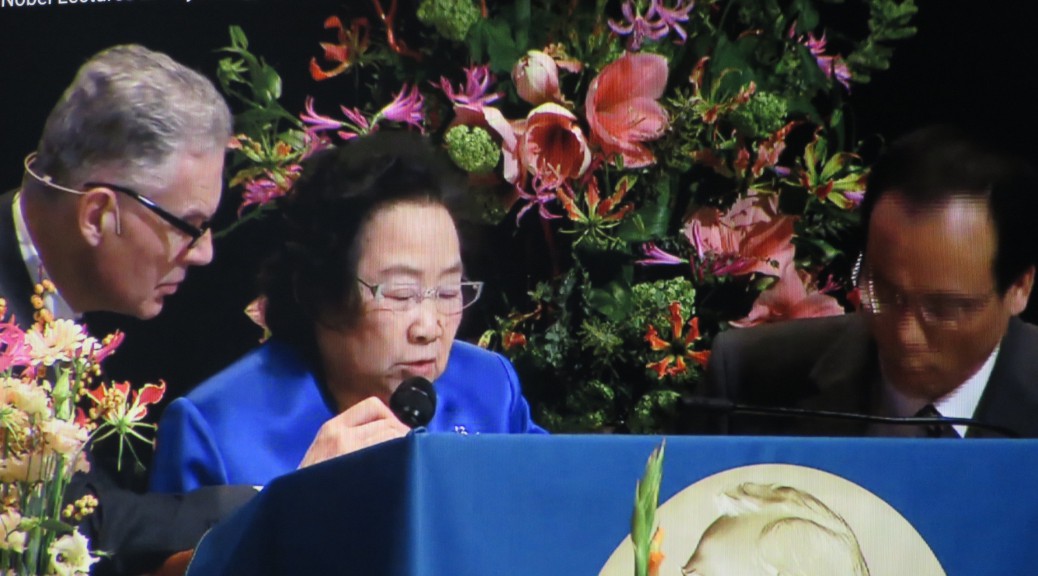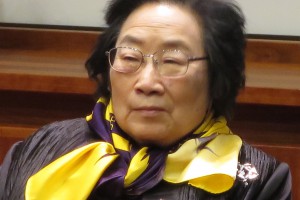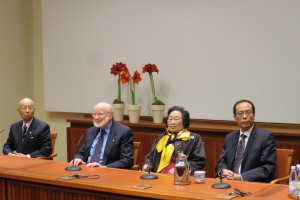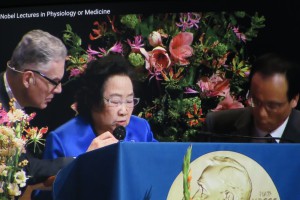The Nobel Peace Prize has been awarded 98 times to 131 Nobel Laureates between 1901 and 2017, 104 individuals and 27 organizations. Since the International Committee of the Red Cross has been awarded the Nobel Peace Prize three times (in 1917, 1944 and 1963), and the Office of the United Nations High Commissioner for Refugees has been awarded the Nobel Peace Prize two times (in 1954 and 1981), there are 24 individual organizations which have been awarded the Nobel Peace Prize. Click on the links to get more information.
The Nobel Peace Prize 2018
The 2018 Nobel Peace Prize has not been awarded yet. It will be announced on Friday 5 October, 11:00 a.m.
The Nobel Peace Prize 2017
International Campaign to Abolish Nuclear Weapons (ICAN) “for its work to draw attention to the catastrophic humanitarian consequences of any use of nuclear weapons and for its ground-breaking efforts to achieve a treaty-based prohibition of such weapons”
The Nobel Peace Prize 2016
Juan Manuel Santos “for his resolute efforts to bring the country’s more than 50-year-long civil war to an end”
The Nobel Peace Prize 2015
National Dialogue Quartet “for its decisive contribution to the building of a pluralistic democracy in Tunisia in the wake of the Jasmine Revolution of 2011”
The Nobel Peace Prize 2014
Kailash Satyarthi and Malala Yousafzai “for their struggle against the suppression of children and young people and for the right of all children to education”
The Nobel Peace Prize 2013
Organisation for the Prohibition of Chemical Weapons (OPCW) “for its extensive efforts to eliminate chemical weapons”
The Nobel Peace Prize 2012
European Union (EU) “for over six decades contributed to the advancement of peace and reconciliation, democracy and human rights in Europe”
The Nobel Peace Prize 2011
Ellen Johnson Sirleaf, Leymah Gbowee and Tawakkol Karman “for their non-violent struggle for the safety of women and for women’s rights to full participation in peace-building work”
The Nobel Peace Prize 2010
Liu Xiaobo “for his long and non-violent struggle for fundamental human rights in China”
The Nobel Peace Prize 2009
Barack H. Obama “for his extraordinary efforts to strengthen international diplomacy and cooperation between peoples”
The Nobel Peace Prize 2008
Martti Ahtisaari “for his important efforts, on several continents and over more than three decades, to resolve international conflicts”
The Nobel Peace Prize 2007
Intergovernmental Panel on Climate Change (IPCC) and Albert Arnold (Al) Gore Jr. “for their efforts to build up and disseminate greater knowledge about man-made climate change, and to lay the foundations for the measures that are needed to counteract such change”
The Nobel Peace Prize 2006
Muhammad Yunus and Grameen Bank “for their efforts to create economic and social development from below”
The Nobel Peace Prize 2005
International Atomic Energy Agency (IAEA) and Mohamed ElBaradei “for their efforts to prevent nuclear energy from being used for military purposes and to ensure that nuclear energy for peaceful purposes is used in the safest possible way”
The Nobel Peace Prize 2004
Wangari Muta Maathai “for her contribution to sustainable development, democracy and peace”
The Nobel Peace Prize 2003
Shirin Ebadi “for her efforts for democracy and human rights. She has focused especially on the struggle for the rights of women and children”
The Nobel Peace Prize 2002
Jimmy Carter “for his decades of untiring effort to find peaceful solutions to international conflicts, to advance democracy and human rights, and to promote economic and social development”
The Nobel Peace Prize 2001
United Nations (U.N.) and Kofi Annan “for their work for a better organized and more peaceful world”
The Nobel Peace Prize 2000
Kim Dae-jung “for his work for democracy and human rights in South Korea and in East Asia in general, and for peace and reconciliation with North Korea in particular”
The Nobel Peace Prize 1999
Médecins Sans Frontières “in recognition of the organization’s pioneering humanitarian work on several continents”
The Nobel Peace Prize 1998
John Hume and David Trimble “for their efforts to find a peaceful solution to the conflict in Northern Ireland”
The Nobel Peace Prize 1997
International Campaign to Ban Landmines (ICBL) and Jody Williams “for their work for the banning and clearing of anti-personnel mines”
The Nobel Peace Prize 1996
Carlos Filipe Ximenes Belo and José Ramos-Horta “for their work towards a just and peaceful solution to the conflict in East Timor”
The Nobel Peace Prize 1995
Joseph Rotblat and Pugwash Conferences on Science and World Affairs “for their efforts to diminish the part played by nuclear arms in international politics and, in the longer run, to eliminate such arms”
The Nobel Peace Prize 1994
Yasser Arafat, Shimon Peres and Yitzhak Rabin “for their efforts to create peace in the Middle East”
The Nobel Peace Prize 1993
Nelson Mandela and Frederik Willem de Klerk “for their work for the peaceful termination of the apartheid regime, and for laying the foundations for a new democratic South Africa”
The Nobel Peace Prize 1992
Rigoberta Menchú Tum “in recognition of her work for social justice and ethno-cultural reconciliation based on respect for the rights of indigenous peoples”
The Nobel Peace Prize 1991
Aung San Suu Kyi “for her non-violent struggle for democracy and human rights”.

